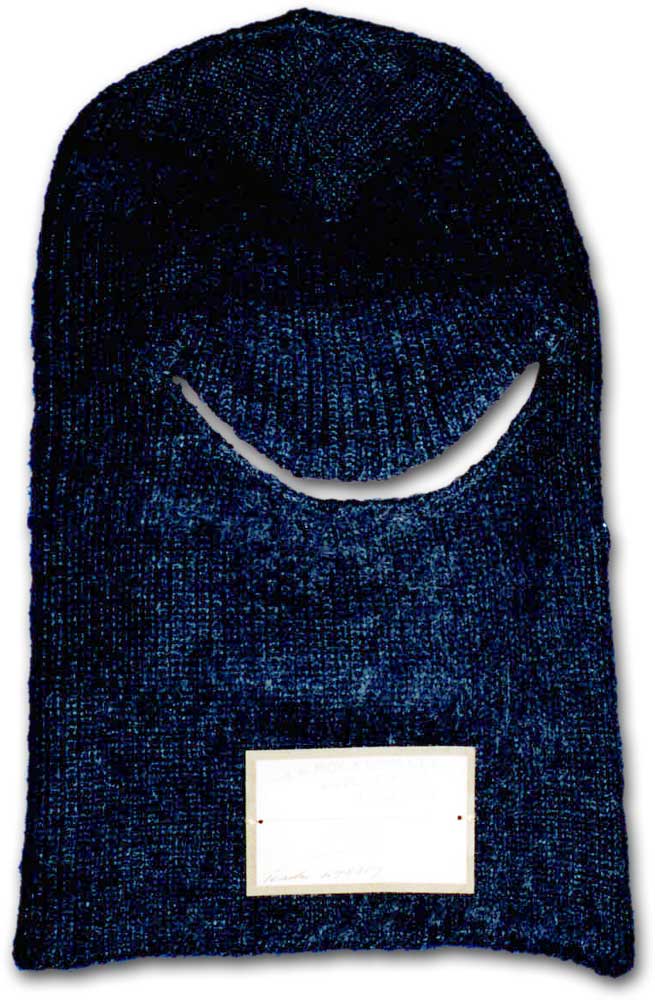Effects of War
The outbreak of war in 1914 created new challenges and opportunities for the knitting industry. Economic growth was brought to a halt as uncertainty spread across the world.

Military pattern balaclava made in Leicester
Government contracts gained by manufacturers in the knitting industry kept many of East Midlands factories going. Corahs supplied over seven million garments to the Government between 1914 and 1918. The completion of orders was achieved despite the loss of employees to the armed forces. Half of the male members of Corah's workforce, 330 in total, went to serve their country, 40 never returned.
New times, new fashions
The experience of war had a long term impact on the country and changed attitudes. There had been widespread loss of family members and reliance on women to keep the factories running. The formality of previous generations was abandoned in favour of more casual informal wear. For women, shorter skirts replaced the ankle-length skirts of Victorian and Edwardian times. With the introduction of short skirts came an increase in demand for stockings. The demand created an opportunity for producers of manmade fibres, such as rayon, that provided a cheaper alternative to silk. Other fibres used for stockings included lisle and wool. Despite the development of cheaper fibres, stockings continued to be a luxury. In 1930, British women bought an average of only 1.5 pairs per year. This figure had increased to an average of 4.5 pairs per year by the outbreak of the Second World War in 1939.
Other areas of growing demand for the knitting industry were outerwear and underwear. Outerwear such as cardigans and jumpers became very fashionable amongst men and women. Women wore long hip-length cardigans with pockets and jumper-dresses while men wore cardigans in place of casual jackets. Fair Isle knitted pullovers became the rage after the Prince of Wales (later King Edward VIII) was pictured wearing one. Matching socks would sometimes be worn with the cardigan, often on the golf course. The change in skirt lengths led to new styles in women's underwear. Shorter skirts would have revealed the traditional long frilled drawers and, therefore, thigh length knickers were worn. Between 1924 and 1939 the output of underwear nearly doubled.
Weaving in knots
While the cotton weaving industry of the North West experienced decline between the wars, the knitting industry in the East Midlands continued to expand and flourish. Cotton weaving had relied upon overseas markets to maintain its level of output, but with increased competition abroad and global economic problems, great hardship was experienced. In contrast, the knitting industry did not face this problem to the same extent, and it was able to benefit from the growing market for its more fashionable products. Falling costs made knitted goods increasingly affordable for the country's population and generated further demand. Cheaper goods also meant that clothes were more likely to be replaced instead of repaired if they were damaged. The workforce increased from 70,000 in 1912 to 122,000 in 1937, of which around 80% were women.
War again
As war approached, companies turned to producing clothes for the troops. From 1939 men and women were recruited in greater numbers to the armed forces and needed uniforms. The outbreak of World War II in 1939 brought difficult times to Britain and clothes rationing was introduced in June 1941. A Director of Civilian Hosiery was tasked with controlling yarn allocation, how clothes were made, and how many were made. Companies were told every four months how much they could produce and were required to report output figures every two months. To indicate that an item of clothing met the quality standards set out in the regulations, a utility mark consisting of 'CC41' plus the style number and the company's code was stamped onto the garment. By the end of 1943, 99% of women's stockings and 96% of all other garments were utility marked. Clothes rationing continued until 1949.